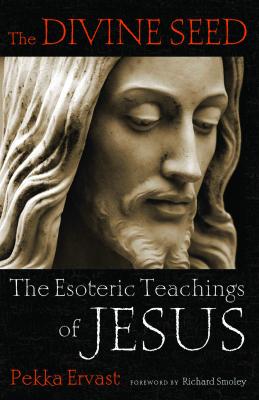by Pekka Ervast (Wheaton, IL: Quest Books, 2010)
book review by Rene Wadlow
We possess a single infallible guide, the Universal Spirit that lives in men as a whole, and in each one of us, which makes us aspire to what we should aspire: it is the Spirit that commands the tree to grow toward the sun, the flower to throw off its seed in autumn, us to reach out towards God, and by so doing become united to each other.
Leo Tolstoy
There have been a good number of serious efforts to place the life of Jesus in his own time in order to understand better what his life can mean for us today. This was particularly true for such writers as Ernest Renan Life of Jesus (1863), Albert Schweitzer Quest of the Historical Jesus (1906) and the writings of the German theologian Rudolf Bultmann (1884-1976).
Each effort usually stressed a particular aspect of Jesus: a reform rabbi, Gnostic sage, political revolutionary, or gentle hippie advocating a natural religion of kindness and universal morality, one in deep contrast to the legalistic, hierarchical, sin-obsessed religion of his milieu. Earlier efforts had to rely on the Gospels of Mark, Matthew, Luke and John and what was known of Roman occupation of the Near East from other sources.
However in 1945, a cache of ancient papyrus books were discovered at Nag Hammadi in Egypt. Fifty-two in number, the Nag Hammadi writings contain translations into Coptic of earlier Greek writings such as The Secret Book of James, The Apocalypse of Peter, The Gospel of Philip, and especially, The Gospel of Thomas, largely sayings attributed to Jesus. These Gnostic texts give a fuller understanding of the currents of thought of the period of Jesus and the first century following. There were many gospels circulating among early Christian groups. More recently a Gospel of Judas which had been found in Egypt was published by the National Geographic Society. (1)
The emphasis in many of the Gnostic writings is on the inner light, echoed in Luke’s “The Kingdom of God is within” — a transformation of self based on a new state of awareness. Jesus calls to share this new consciousness which dispels darkness and renews the whole self. Jesus calls on each to awaken to the wholeness which he himself demonstrated.
Pekka Ervast, a Finish theosophist and follower of Leo Tolstoy, stresses this inner awareness by his analysis of the parables and their symbols — the seed, the salt, the leaven — all inner forces that then fill the whole body.
Self-transformation requires honesty, commitment and spiritual practice to cultivate this awareness. Ervast shows how the need to overcome fears, anger, mistrust and a desire for vengeance are necessary, as Jesus stressed in his Sermon on the Mount (Matthew 5-7) and structured as a meditation framework in the Lord’s Prayer.
This self-transformation is reflected in the outer world by efforts for peace. “Blessed are the peacemakers, for they shall be called the children of God…Love your enemies, pray for those who persecute you.” Jesus teaches that we see not only the splinter in our adversary’s eye, but the beam in our own. The distinction between good and evil does not run between one nation and another, or one group and another. It runs through every human heart.
Pekka Ervast presents a useful picture of the teachings of Jesus on the need for self-awareness and growth into higher consciousness. Self-transformation is not an “esoteric teaching” of Jesus reserved for his inner circle of disciples but is the core of his message. That self-awareness can be dangerous is highlighted by a common theme of all the accounts of the life of Jesus — the religious and political authorities of his day cooperated to kill him.
(1) see Elaine Pagels The Gnostic Gospels
You need to be a member of Theosophy.Net to add comments!
Join Theosophy.Net